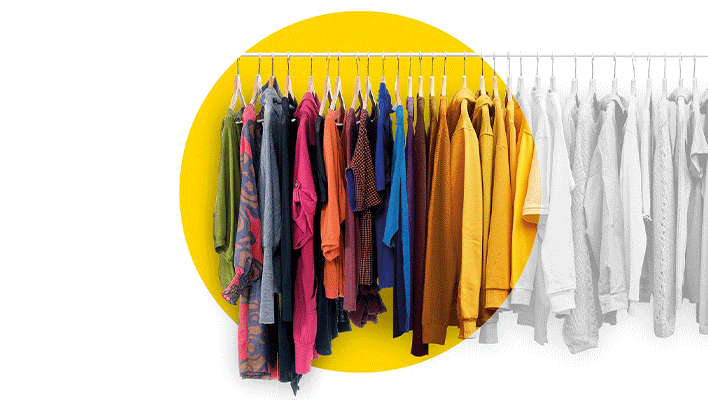
Discover The Little Guide to Responsible Consumption



The textile industry is perpetually being renewed. Ever-shifting clothing trends make fashion the second most polluting industry in the world, one now responsible for 10 percent of carbon emissions in the world. That represents 1.2 billion tons of greenhouse gases (GHGs) every year. If nothing is changed, the industry will be using a quarter of the world’s carbon budget by 2050*.
Fast fashion and ultra-fast fashion are built on unethical mass production and low-quality textiles, fueling overconsumption. What is its impact? Consumers buy more clothes but hardly wear them. To change this trend, it’s essential that we adopt more responsible consumption habits.
*Sources: GIEC, Recycling Council of Alberta et Canada’s Ecofiscal Commission

This Little Guide to Responsible Consumption offers tips and tricks on buying less and buying better. It’s also a challenge: to create a capsule wardrobe made up of a maximum of 40 pieces of clothing per season. You’ll kill three birds with one stone: take some pressure off your wallet, free up space in your closet, and reduce your environmental impact.
In this guide:
![]() Creating a capsule wardrobe for consumption for good
Creating a capsule wardrobe for consumption for good
![]() Buying responsibly
Buying responsibly
![]() Recycling and upcycling
Recycling and upcycling
![]() Buying better
Buying better

Look at what you already have.
Ask yourself whether you really need it.
Rent, borrow or trade.
Favor local businesses.
Make second-hand shopping a habit.
Learn as much as you can about the quality of the product you want and on the good practices of the brand.
Your task is to guess which of these looks has been created from second-hand clothing. See if you can tell the difference.
Good luck!

True
False
False
True

True
False
False
True

Up for the challenge?
Discover advice, tips, and tricks on buying responsibly and starting a capsule wardrobe.